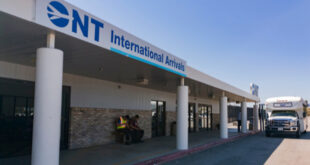The new version will have two new locks, making it easier to move goods through the canal and creating better access to ports on the East Coast. That could be a game-changer for California and the Inland Empire, but several observers believe the impact will be minimal.
Sometime this summer, the expansion of the Panama Canal that began in 2007 will be completed.
The enlarged canal will include two new sets of locks, one on the Atlantic Ocean side of the canal, the other on the Pacific, according to the project’s official website, pancanal.com.
That will allow more and larger ships to move through the canal, and in some cases carry twice as much cargo.
The current locks, which have been in use since the canal opened in 1914, will be widened and deepened, and the maximum level of the artificial lake that makes up part of the canal – Gatun Lake – will be raised.
Currently, large “Panamax” boats that can carry more than 50,000 tons of goods can’t fit into the canal, so they must travel around it. In the case of ships traveling to the United States, it takes longer and is more expensive to reach ports in the Gulf of Mexico and on the east coast, so west coast ports – particularly Los Angeles and Long Beach – often become their preferred destination.
That dynamic would change with a larger canal that could handle the Panamax vessels.
Work on the expansion was 96 percent completed by the end of last year, and most estimates have the $5.2 billion project finished by the end of June. Whenever it’s completed, the new and improved Panama Canal will reshuffle international shipping lanes and make it easier to transport cargo to the southern and eastern United States.
The trouble is, no one knows how much that will change things at west coast ports, in California or anywhere else.
A study released last year by the Boston Consulting Group predicts that by 2020 the Panama Canal expansion will have increased by 10 percent the amount of imports to east coast ports. Because some diversion in that direction is already happening, in four years there will be a 50-50 balance of imports received by east and west coast, according to the study.
The report noted that ports in New York, New Jersey, Georgia and Virginia are the places most likely to benefit from the expansion, and that each has spent considerable sums improving their facilities to accommodate large ships and more container traffic.
That could be bad news for the Inland Empire, with its network of warehouse-distribution operations that rely on imports from all over the world to stay in business and prop up much of the region’s economy, said Jock O’Connell, a Sacramento-based economist and an expert on international trade.
Four years ago, there was some speculation that the enlarged canal – which was originally supposed to be completed in 2014, the 100th anniversary of the Panama Canal’s opening – might allow imports to bypass California.
But more information about the canal expansion has come out since 2012, and with the economy much stronger now, the possibility of losing some import traffic to the ports in New Orleans or New York/New Jersey doesn’t seem so threatening, O’Connell said.
“There was some concern a few years ago that it could be bad for California, but I think most of that has gone away,” said O’Connell, who said he once believed container traffic at Los Angeles and Long Beach could be cut by as much as 25 percent after the Panama Canal was enlarged.
“I think there were a few back-of-the-envelope calculations, but by now people have had a chance to look at it more closely and they aren’t as concerned,” O’Connell said. “I’m still watching it, but now I don’t expect it to have as big an impact as I thought it would.”
Even with a more accommodating Panama Canal, bypassing the west coast for the Gulf of Mexico or the eastern seaboard is still a long journey and one that a lot importers would prefer to avoid, O’Connell said.
“More than half the goods that come through Los Angeles and Long Beach are headed for a business in Southern California,” O’Connell said. “In that case, it wouldn’t make any sense to go straight to the east coast, regardless of what shape the Panama Canal is in.”
The amount of construction in the logistics industry that is happening now in Riverside and San Bernardino counties shows that developers aren’t concerned about a drop in activity at the local ports, either because of an expanded Panama Canal or anything else, said Peter McWilliams, international director of industrial services for JLL Ontario.
The Inland Empire’s industrial market has experienced about one million square feet of positive net absorption during the past 18 months, and it remains the hottest industrial market in the United States, McWilliams said.
“Developers know their market, and if they were worried about a drop in demand I don’t think they would keep building like that,” said McWilliams, who said concern about the Panama Canal widening peaked about three years ago, then subsided as the economy began to improve. “They’re projecting out 15 to 50 years, which is a big bet, and they aren’t seeing a drop off.”
Maybe the real issue with the Panama Canal widening and west coast ports is a decade or so away, said Jay Prag, professor of economics and finance at the Drucker School of Management at the Claremont Colleges.
“I don’t see it making a difference now, but I could see it changing things maybe over the next 10 or 15 years,” Prag said. “It will be easier to get to the [Gulf of Mexico] and the east coast, and some developers might decide to build their warehouses back there, or in the Midwest, rather than on the west coast. I think that’s one possibility people might be overlooking.”
 IE Business Daily Business news for the Inland Empire.
IE Business Daily Business news for the Inland Empire.


